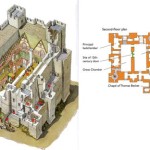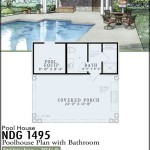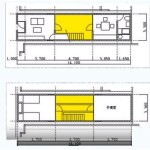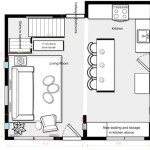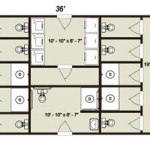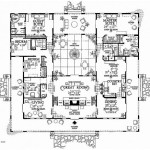Suburban Home Floor Plans: A Guide to Choosing the Right Design
Suburban home floor plans represent a significant segment of the residential housing market, catering to families seeking a balance of space, comfort, and community living. Understanding the various types of suburban home plans and the factors influencing their design can significantly impact the home buying or building process.
One key aspect of suburban home design is the lot size. Suburban lots tend to be larger than those found in urban areas, allowing for more expansive homes and outdoor spaces. This larger footprint allows architects and designers to incorporate features like attached garages, driveways, and front and back yards. Floor plans often reflect this by including features like mudrooms, laundry rooms, and dedicated storage areas, amenities often impractical in smaller urban dwellings.
The layout of suburban homes often prioritizes family living. Open-concept designs have become increasingly popular, connecting the kitchen, dining, and living areas into a single, flowing space. This design promotes interaction and creates a sense of spaciousness. These plans frequently incorporate features like kitchen islands and breakfast bars to further enhance this communal space.
Bedrooms in suburban homes are typically situated away from the main living areas, providing a degree of privacy. Master suites, often featuring walk-in closets and en-suite bathrooms, are a common feature in larger suburban homes. The number of bedrooms and bathrooms often correlates with the overall size of the home and the target demographic, ranging from smaller three-bedroom homes for young families to larger five- or six-bedroom homes designed for larger or multi-generational families.
Outdoor living spaces are a crucial element of suburban home design. Patios, decks, and porches extend the living area outwards, providing spaces for relaxation and entertainment. Landscaping plays a vital role in creating a sense of curb appeal and enhancing the overall aesthetic of the property. Floor plans often consider the integration of indoor and outdoor spaces, with large windows and sliding doors maximizing natural light and providing seamless transitions.
The architectural style of suburban homes varies widely, reflecting regional preferences and historical influences. Traditional styles like Colonial, Cape Cod, and Ranch remain popular, while contemporary designs are also gaining traction. The choice of architectural style often influences the floor plan, with traditional styles typically featuring more formal layouts and contemporary styles embracing open-concept designs.
Functionality and practicality are paramount in suburban home floor plans. Features like ample storage, dedicated laundry rooms, and mudrooms designed to manage the transition between indoor and outdoor spaces are highly valued. The placement of these functional spaces within the overall floor plan is carefully considered to maximize efficiency and convenience.
The garage is an integral part of most suburban homes. Attached garages provide convenient access to the home and offer protected parking. The size of the garage often reflects the needs of the homeowner, with larger garages accommodating multiple vehicles and providing additional storage space. The floor plan often incorporates direct access from the garage to the main living area, typically through a mudroom or laundry room.
Energy efficiency is an increasingly important consideration in suburban home design. Floor plans often incorporate features like energy-efficient windows, insulation, and appliances to reduce energy consumption and lower utility costs. The orientation of the home on the lot can also be optimized to maximize natural light and minimize the need for artificial lighting and heating.
Adaptability and flexibility are important factors to consider when choosing a suburban home floor plan. Families evolve over time, and the home should be able to adapt to changing needs. Open-concept designs offer a degree of flexibility, allowing spaces to be repurposed as needed. Features like unfinished basements or bonus rooms provide opportunities for future expansion or customization.
The selection of a suburban home floor plan is a significant decision. Careful consideration of factors like lot size, family needs, lifestyle preferences, and budget are crucial to finding the right design. Consulting with architects and builders can provide valuable insights and guidance throughout the process. Understanding the different types of floor plans available, their advantages and disadvantages, can empower prospective homeowners to make informed choices.
Accessibility is another factor that influences suburban home design. Single-story homes or homes with first-floor master suites are often preferred by individuals with mobility challenges. Features like wider doorways and hallways can also enhance accessibility. Incorporating universal design principles into the floor plan can ensure that the home remains functional and comfortable for all occupants regardless of age or ability.
The local zoning regulations and building codes also play a role in shaping suburban home floor plans. These regulations dictate aspects like setbacks, building height restrictions, and permissible land uses. Understanding these regulations is essential for ensuring that the chosen floor plan complies with local requirements.

1 5 Story Modern Cottage Style Plan Fox Hills House Plans Farmhouse

Suburban Family Home House Floor Plans Image Search Results Blueprints Sims

40 Small Suburban House Plans Ideas Floor

40 Small Suburban House Plans Ideas Floor

House Plans The Strathcona Cedar Homes

Narrow Lot Plan 2242 Square Feet 4 Bedrooms 2 Bathrooms Abbott House Plans Remodeling

House Plan The Canyonville S Stone Veneer Gives It A European Look

Parkland Home House Suburb Floor Plan Building Room Png Pngwing

Plan 62831dj Modern Farmhouse With Two Garages And A Covered Breezeway Plans Sims House Design

Minto S Contempos Rethinking Suburban Homes In The 1990s

